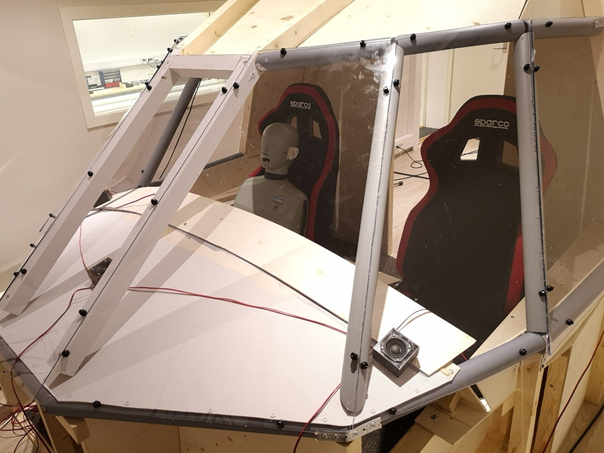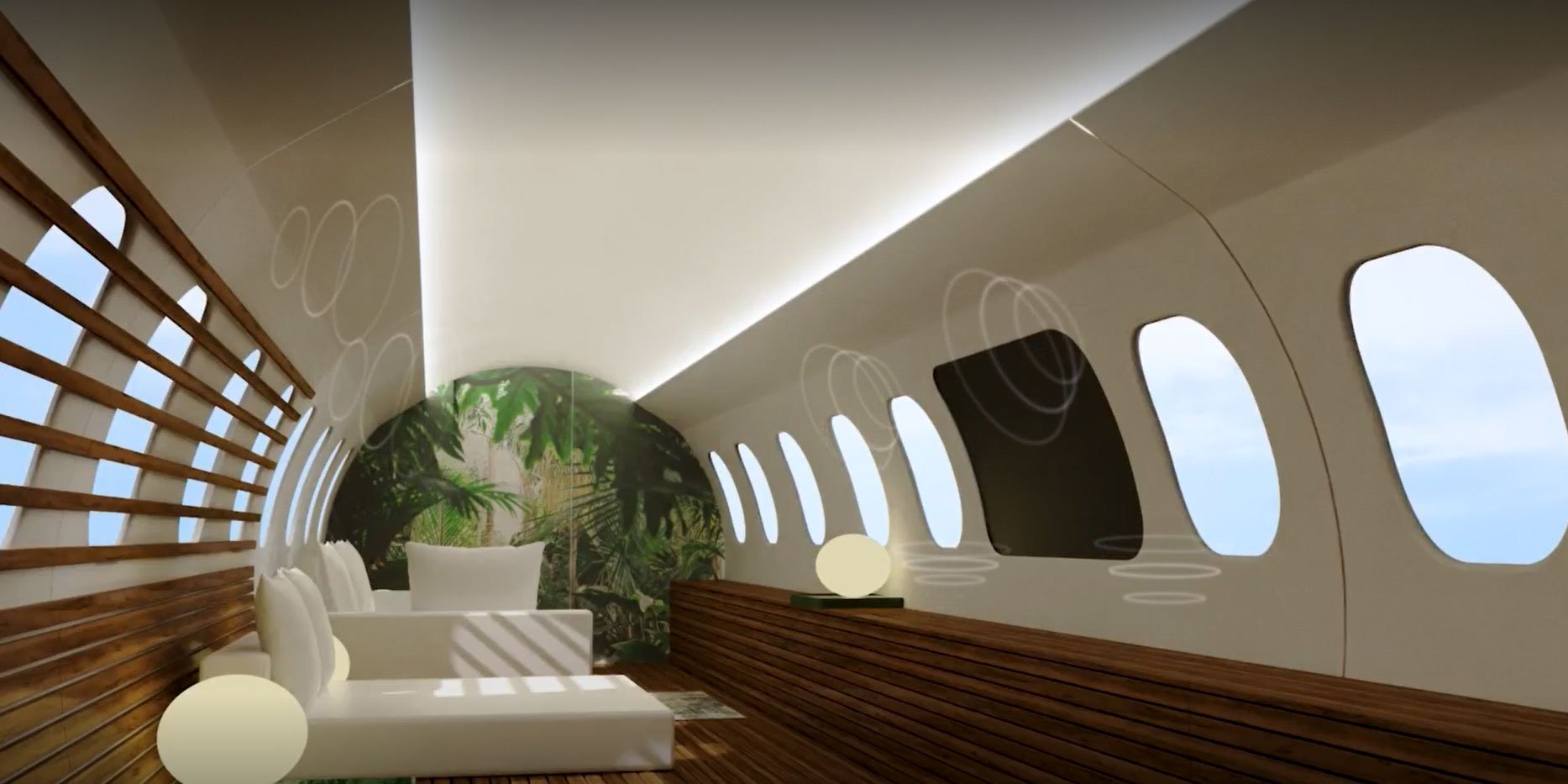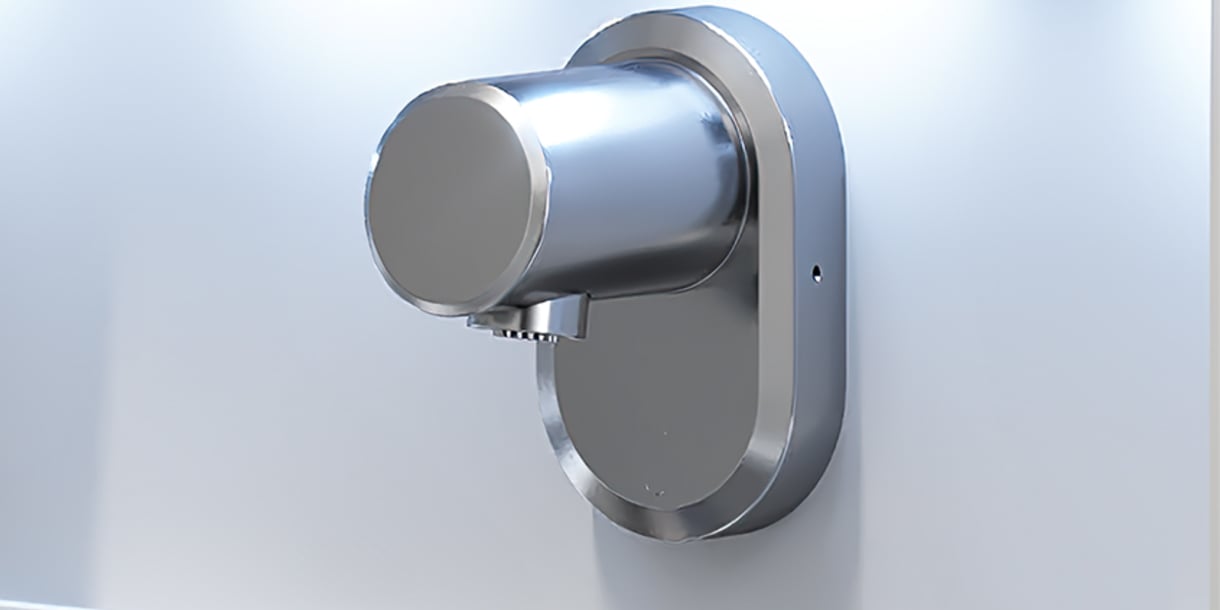Click Here to View This Page on Production Frontend
Click Here to Export Node Content
Click Here to View Printer-Friendly Version (Raw Backend)
Note: front-end display has links to styled print versions.
Content Node ID: 413179
After some two decades of talk and unmet requests, the demand for voice control on business aircraft is finally being answered. Several factors underpin the advance: voice control has become part of the fabric of everyday life, thanks to Alexa and Siri; evolving technology can now promise seamless simplicity for integrating voice control into cockpit and cabin systems; speech recognition and command are seen as essential for enabling aviation’s Advanced Air Mobility (AAM) future; and perhaps most importantly, research has shown that voice command can reduce workload and increase safety for flight crews. Here’s what companies leading the onboard voice command revolution are doing now and have planned.
Garmin International
Garmin International was the first avionics OEM to bring certified voice command capability to the cockpit, although a company called Voice Flight Systems was the first to obtain FAA approval, for the VFS101 voice command flight plan entry product for Garmin GNS navigators. Garmin's Telligence voice command was featured in a 2016 software upgrade for Garmin’s GTN 650/750 touchscreen navigator series displays paired with its GMA 350/GMA 35 audio panels. Telligence, engaged via a yoke-mounted push-to-command button, uses automatic speech-recognition technology that understands “intuitive phraseology,” the Olathe, Kansas company said, and it accepts hundreds of common task commands.
Crew members can tune radios, get flight information, navigate through the flight deck’s menus, and more using their voices. The command “Tune…,” for example, can call up frequencies for ATIS, airport towers, approach facilities, air traffic control centers, and other frequencies drawn from the flight plan in the systems. The command, “Say…” induces the system to provide the requested information in speech via the audio panel. Crews can call for charts to be displayed, then zoom in and out on the display by voice command, as well.
Telligence is also available for helicopters via the GMA 350H audio panel, an ideal application for the technology, as both of a rotorcraft pilot’s hands are often occupied operating control inputs. Switching comms is as simple as saying “MIC 1” or “MIC 2.”
As with all voice command systems to various degrees, crew members must train with Telligence, performing at least 85 percent of voice commands as part of the qualification procedure, and they must be proficient in English and follow proper enunciation, speech cadence, tone, and volume guidelines for voice command to work properly.
As for current voice command R&D efforts, a spokeswoman for Garmin told AIN that it is “always innovating and working to provide enhancements” to its voice command technology to add “industry-leading features.”

Honeywell Aerospace
The forthcoming Anthem flight deck from Honeywell Aerospace—the fifth generation of the company’s Primus platform—promises to introduce an advanced voice-recognition and command-capable certified flight deck.
“The goal is to allow more natural interaction such that pilot mistakes are less likely,” said Jason Bialek, Honeywell’s director of product marketing. “Assuming you’ve implemented it correctly and overcome accuracy and latency problems, it should provide an experience like you’re flying with another pilot, versus having to force yourself to think about how you’re inputting things.”
Anthem is distinguished by its easily customized, firmware-controlled core, which receives all inputs and drives all displays and is scalable to aircraft platforms of any size. The system architecture allows much quicker development of applications and much greater control over the look and feel of the presentation and the experience, lending itself to OEM customization and branding in their aircraft without disrupting Anthem’s key objective of making flight safer and less complex for pilots.
Anthem’s voice-command applications will allow pilots to speak conversationally to the system and support a wide range of commands and piloting duties. Moreover, the data and processing behind the technology are all housed within Anthem, so it requires no connectivity.
As onboard data-processing power and storage capacity increases, “You’ll be able to bring the much broader, richer experience that we know as consumers to the cockpit, and you’ll be able to say and have it understand more and more things,” Bialek said.
Additionally, Anthem can support third-party applications through cloud connectivity, and Honeywell anticipates that flight crews will access EFB-type apps while airborne that may also incorporate voice command capabilities.
Demand for Anthem is high, “and for this speech capability in particular,” said Bialek, though speech will be only one of a pilot’s input options, which will include forward touch (i.e., pilots can make touchscreen inputs directly on displays, rather than through an intermediate controlling device on the panel) and traditional key displays, whether physical or screen-based.
At least two unnamed OEMs have signed up to bring Anthem to their panels, which the company last year expected to introduce in 2023, but the manufacturers have pushed back their introduction dates. Honeywell itself has also proceeded carefully with perfecting the application to ensure that it’s ready when launched.
“We want about a 90 percent or better [correct command communication] level, even in very noisy environments, and right now we’re getting about 90 percent or better,” Bialek said.
But given the delays in bringing Anthem to market, the Phoenix company will debut its first voice command in the fixed-wing business aircraft cockpit via an upgraded version of its current, fourth-generation Epic flight deck, with at least one customer already contracted. Voice command on the Epic platform—which anchors the cockpits of in-production business jets under the Cessna Citation, Dassault Falcon, Embraer, Gulfstream, and Pilatus brands—will be more rudimentary but will allow pilots “to do things like tune a radio frequency, show a chart, zoom in and out on your map, and set overlays on the map with very specific commands,” Bialek said.
Meanwhile, since Honeywell established its Urban Air Mobility and Unmanned Aerial Systems business unit in 2021, three eVTOL manufacturers—Lilium, Vertical Aerospace, and Supernal—have announced the selection of Anthem flight decks for their platforms, a positive sign for its application in the upcomingAAM environment.
“We can bring Anthem into almost anything that’s currently flying or will fly in the future,” Honeywell has said about its AAM prospects.
The Lilium Jet is a piloted, seven-seat aircraft that will take off and land vertically, cruise at about 152 knots, and have a 135-nm range. Vertical’s VA-X4 is a piloted, five-seat, battery-powered aircraft that also lifts vertically and has a top forward speed of about 174 knots.
This past October at NBAA-BACE, Supernal, the advanced air mobility division of Korean car maker Hyundai, announced selecting Anthem to drive its cockpit. Supernal plans to integrate an array of complex technology that it will be using for the SA-1 eVTOL vehicle, with a commercial service launch target of 2028. Anthem will support plans for ensuring a high degree of autonomy in its operations. Supernal said it expects to start the FAA’s type certification process for the SA-1 in 2024.
SA-1 will initially be piloted and carry four passengers, but an autonomous, six-passenger variant is planned. It is being designed to cruise at up to about 157 knots at 1,000 to 2,000 feet agl, with a range of some 52 nm on a single charge.
Honeywell also manufactures the Ovation Select cabin management system (CMS), introduced in 2011, which has been installed on Boeing, Bombardier, Dassault Falcon, Embraer, and Gulfstream jets. Asked whether voice control would be added to Ovation’s features, Honeywell said it expects “OEMs will incorporate common-sense speech controls for controlling cabin lighting, sound systems, and other things similar to what many of us already do in our homes with Alexa, in their own cabin systems,” but the company hasn’t said it will add voice to Ovation.

Clean Sky 2 Voice Crew Interaction Project
The potential benefits of voice command in the cockpit have drawn interest that extends beyond avionics manufacturers and their eager customers. The recent Voice Crew Interaction (VOICI) project conducted under Europe’s Clean Sky 2 program—the largest aviation research project in the Continent’s history—investigated creating an intelligent, voice-controlled “natural crew assistant” for the cockpit as part of the program’s objective of identifying cutting-edge technologies to reduce CO2, gas emissions, and noise levels produced by next-generation aircraft.
VOICI created an Audio Evaluation Environment, or cockpit demonstrator, enabling evaluation of the system at Technology Readiness Level (TRL) 3—experimental proof of concept— by end-user pilots.
The demonstrator emulated a Dassault Falcon 2000 cockpit in flight and included calibrated cockpit noise recorded onboard a Falcon 2000, with the audio split into multiple channels representing multiple noise sources. The system incorporated and tested technologies including speech capture; speech recognition and interpretation/dialog; and speech synthesis for dialog with the crew. The demonstrator’s processing engine used a context-dependent language model and deep-learning approaches for training, after which it exhibited a 5 percent word-error rate in cruise flight conditions. Speech-based feedback to the pilot was provided by a text-to-speech function optimized for a noisy environment.
Two speech-capture methods were tested on the cockpit assistant (nicknamed “Solo”): a standard pilot’s headset microphone, and an ambient microphone array in the cockpit. The input was processed by stand-alone speech/dialog processing functions within the self-contained system, obviating the need (and risks) of cloud connectivity. The functions included voice-activity detection, speech enhancement, context-dependent speech recognition, and text-to-speech for the noisy environment.
The research found that a headset’s close-talk microphone is superior to an array of embedded microphones in a cockpit environment, but also revealed that arrays of very-low-noise optical microphones produced significant noise suppression when used with modern beamforming algorithms; researchers declared that the beamforming technology represents “a significant project exploitation potential both in aviation/transport and in a much wider market.”
The two-year VOICI project ended in 2020 but determined that voice command supported Clean Air 2’s objectives by reducing crew workload and stress; enhancing safety and efficiency; reducing the cost of operations; and improving maintenance.
Moreover, a system architecture demonstrator enabled researchers to validate the complete cockpit solution concept—including detailed flight crew interfaces, functions, and performance—to TRL5, denoting laboratory testing of an integrated or semi-integrated system, on a virtual system tntegration bench.
But going forward, an aircraft cockpit, with its zero-fault environment, will likely not be leading the advances in onboard voice command application; The potential consequences of miscommunication or misunderstanding are too great. The cabin will likely host the more ambitious voice command applications, an evolution already underway.

Lufthansa Technik’s Nice CMS
The latest iteration of Lufthansa Technik’s Nice (network integrated cabin equipment) CMS, featured as standard equipment on Bombardier’s Challenger 3500, includes advanced artificial intelligence-driven voice command for cabin systems.
The multilingual system “uses an intelligent algorithm that learns commands with time, so it grows and evolves,” said Dr. Wassef Ayadi, senior director of customer relations and sales support services at Lufthansa Technik (LHT). “It can be trained to understand certain behavior, and to react accordingly. Commands are given via small control units throughout the cabin and can be engaged by speech or clicking on the voice-control command.
Nice’s enhanced capability reflects LHT’s and the industry’s goal of delivering the home- and office-like experiences that consumers have come to expect into the sky. But unlike Siri, Alexa, and most other popular voice-recognition systems, Nice voice command requires no internet connectivity—all the software is contained in the CMS.
“Not every aircraft is connected [to the internet] from a cabin connectivity standpoint,” Ayadi said, explaining one reason for having a self-contained system, but additionally, “We know privacy for this target group is very important,” a concern obviated when commands and possibly other onboard dialog never go to the cloud.
LHT continues developing the system’s capabilities, but its vocabulary and commands can expand as it learns, “as a human being does when you interact and the machine is really fed a lot of information,” Ayadi said. “You even forget that you are interacting with the machine.”
But as with a human, education counts: “The machine can differentiate emotions, nuances, and more, but if you feed it only a definite number of commands, the interaction the system can handle will be limited to those commands.”
But why would passengers bother interacting with a system they have to teach?
“The key is to make technology hassle-free and as enjoyable as possible,” Ayadi said, adding that LHT is getting “very positive feedback” from crews, operators, and OEMs, and that the acceptance level from passengers has been high. He added that “some generational effect is playing a role in the way they interact,” suggesting younger passengers in general are more comfortable than older ones with using voice command onboard.
Additionally, Nice can be custom configured by operators to match the preferences of different clients, adjusting not only the voice-command system, but the entire onboard ambiance to create a personalized experience for each. In the future, LHT envisions that the system will handle much more than onboard chores, and be capable of accomplishing tasks—making reservations, arranging services, monitoring ground-based activities, and more—that human personal assistants typically manage. 
Collins Aerospace
Collins Aerospace also appears on the cusp of offering voice command in the cabin, but not in the cockpit. When the Charlotte, North Carolina company was established via a merger in 2019, the head of avionics marketing proclaimed that next-generation avionics by voice command “is one of the new features that will be commercialized in the short term,” but no development news has followed. Collins declined to share any plans for bringing voice command to its Pro Line series flight decks, which are installed in the panels of business aircraft including Bombardier Challengers, Cessna Citations, Gulfstreams, Hawkers, Learjets. and Piaggios, or via other avionics platforms.
But Collins has announced plans to add voice control to its Venue CMS in the third or fourth quarter of this year. The system will use cloud access and artificial intelligence to “deliver [a] superior user experience,” accessible and controllable via passengers’ own devices,” a spokesperson said. The initial implementation will be on Apple iOS with Google Android to follow, and a development lab demo of the system is available for prospective customers.

Diehl Aerospace
However, voice command may not be the last word in onboard communication media—nor is it limited to the cockpit and passenger seating area. Diehl Aerospace, in collaboration with Airbus, showcased at the 2019 Aircraft Interiors Expo (AIX) an in-development voice-controlled Touchless Lavatory for commercial aircraft cabins.
“Highly developed sensors and finely responsive actuators offer hands-free procedures in functions like operating the waste flap, water faucet, hands-free door handles, toilet seat, and lid and drying your hands,” the German company said, and “operation is self-explanatory.”
A special conversion kit would enable quick installation in almost all lavatories on an Airbus aircraft and require no major changes to the existing construction.
The timing of the product peek, just months before the pandemic and attendant concern about hygiene, could not have been more fortuitous. But Covid also darkened AIX and other in-person trade events for more than two years, and the beleaguered commercial aviation sector wasn’t spending on aircraft upgrades and retrofits.
Since that first showing, Diehl has determined that gesture control—using physical motion—offers more promise for a touchless lavatory environment, the company told AIN, and it has developed the technology for application in civil aircraft.